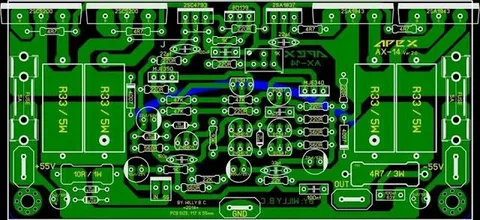That is why it can be stated that proper warehouse management can be a decisive factor determining the efficiency level. Proper treatment of stores or Warehouses form the backbone of present day’s logistical services. Through the use of storage, reduction of cycles, and use of innovations, operations management can turn business into faster and smarter entity. But how can these improvements bring the deep-seated changes needed to affect productivity as well as customer satisfaction? Now let’s discuss the approaches that reshape the warehouse business.
What this is achieved is determining how the strategic layouts can transform efficiency?
One of the biggest benefactor of an effective warehouse design is a reduction of all those traveling and an increase in effective working. Reducing retrieval time is accomplished through organizing inventory according to demand patterns—for example, having frequently ordered products on easily accessed stock locations near dispatch areas. The buyers reap from better order completion while sellers enjoy a more systematized order completion process.
Why Real Time Inventory is Essential?
Welcome to the era where businesses do not need to perform manual physical inventory count. Inventory tracking systems provide immediate alerts so that business organizations do not order for more stock or vice-versa. As such, products are always in stock, thereby avoiding disruptions when they are called into use and this facilitates smooth operation. Real-time also helps managers to come up with decisions they have made based on the data collected hence fulfilling the need for timely decision making in dynamic industries.
What is more, can automation and robotics successfully revolutionise warehouses?
The incorporation of these automation in warehouses has brought improvement to an extent of being referred to as a new age. Bottlenecks of manual handling are solved with picking systems, conveyors and robotic forklifts among others. The identified technologies do not only improve speed, but also minimize the chances of human error, and thus improve accuracy in all processes.

Among these value chain activities are the order fulfillment activities which are increasingly becoming dependent on robotics. Robots are good at performing tasks involving picking and sorting. It increases productivity as well as brings efficiency into the operations by leaving the human worker to handle more sensitive and complex operations.
Automation In Inventory Management
Manufacturing resources planning, real-time data of stock is captured by automated systems, notifications for restocking and a decrease in possibilities of incorrect stock taking.
How is data analytics valuable to making better decisions one step at a time?
Intelligent operation of a warehouse depends on data which is the lifeblood of any efficient system in this regard. Sophisticated data analysis of orders provides insights into volume and fluctuations, time slots and resources that are most used. Thus, this information allows organs of the business to forecast consumption, distribute materials and workforce scientifically and in some cases, define drawbacks or constraints. The strategic management approach is used to maintain the high performance of the warehouses.
Is Sustainability in Warehousing the Next Big Thing?
Sustainability is no longer a luxury or a fancy trend that can be ignored – indeed it is a requirement. Managing the utilization of stocks through efficient use of lighting systems, development of renewable energy technologies, and utilization of environmentally friendly materials leads to minimization of the operational costs as well as environmental degradation. Further, sustainability also embarks with the consumer values making brands to be of worthy value.
Why Is Workforce Training and Engagement Relevant?
As we have seen even in the most sophisticated technologies, the absence of a capable workforce makes them useless. Frese: So, if training is not regular, or is not at least frequent, then Status employees may not know how to use the newest tools. Rewarding keys to its employees’ productivity efforts and best performances hence makes the employees happy and has more productive. For any organization to realize operational efficiency, the workforce must be motivated.
How does Integration with supply chains help improve Operation?
A warehouse is actually an integral part of the supply chain system, not an entity standing alone. Real-time communication with the WMS of suppliers, distributors and transportation partners as a result of the integration. This collaboration minimizes the time taken in the cycle, guarantees the correctness of delivery, and ultimately gives a smooth flow to the supply chain.
Smart technology has found its place in most industries today it particularly plays a significant role in warehouse facilities. Wearable technology like, IoT devices and AI has made a huge change in how warehouses are being managed. Equipment tracking in forklifts with IoT sensors helps to track temperature-sensitive products to maintain the right conditions. Through demand forecasting, consumers’ buying patterns are predicted and businesspeople ensure they get the right quantities of their inventory. They make operations intelligent and flexible.
Can Warehouse Layout Optimization Increase the Density Of Storage Space?
The optimization of space remains a colossal asset for any warehouse. Better utilization of available space is provided by new designs in racking systems and vertical storage solutions. The organized design eliminates any unnecessary items and enhances productivity; besides, it allows for expansion within the existing premises.
Relationship between Customer Satisfaction and Warehouse Management

Finally, the efficiency of the warehouse has a direct reflection of the satisfaction of the customer. Efficient order placement, timely and correct delivery, coupled with the clear status of the orders improves the customer value. Customers become loyal clients which translates to stable growth of the business. It is thus possible for a company to meet and even go a notch higher to satisfy the expectations of the customer by enhancing warehouse management.
Closing the Loop
Warehouse Management is not just the evolution of a process but pioneering change towards efficiency, effectiveness and customer focus. Starting from the adoption of automation to incorporating sustainability everywhere an improvement impacts others in the supply chain. Organizations should be prepared to invest in premium mechanisms and tools if they have to attain new heights in the present-day organization world.






